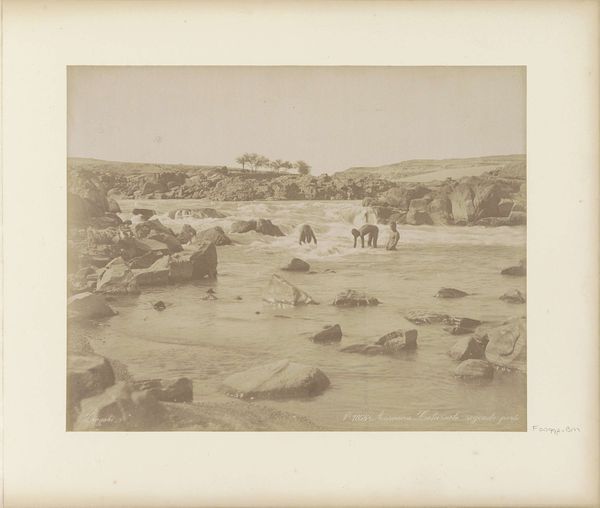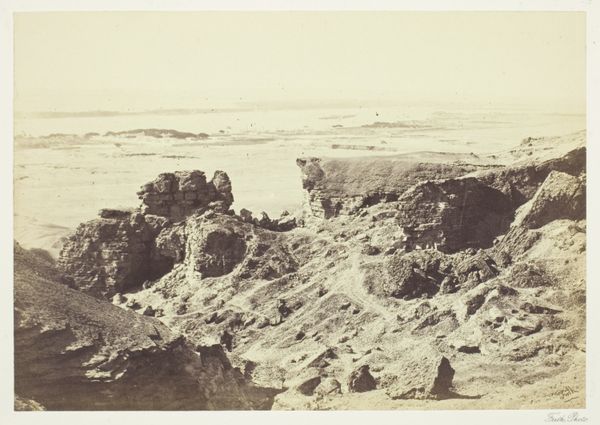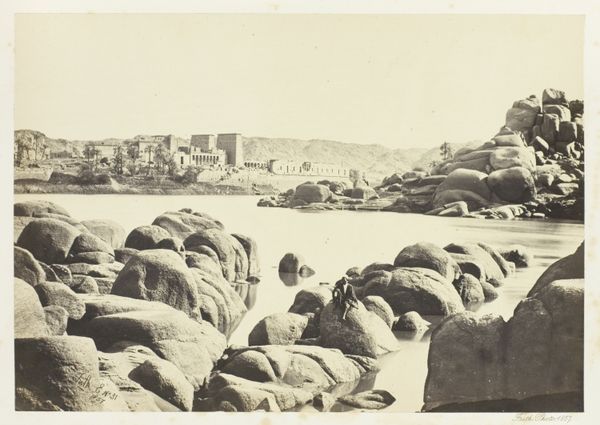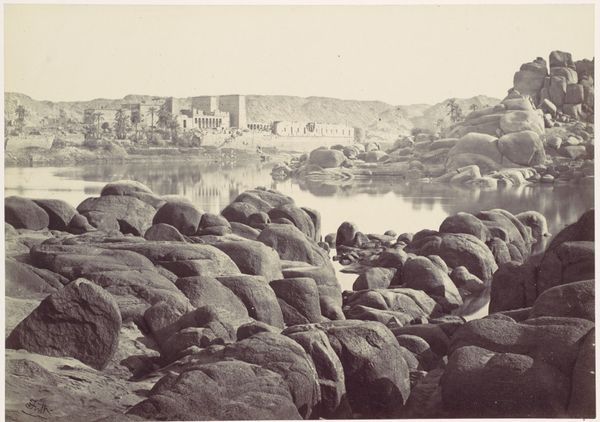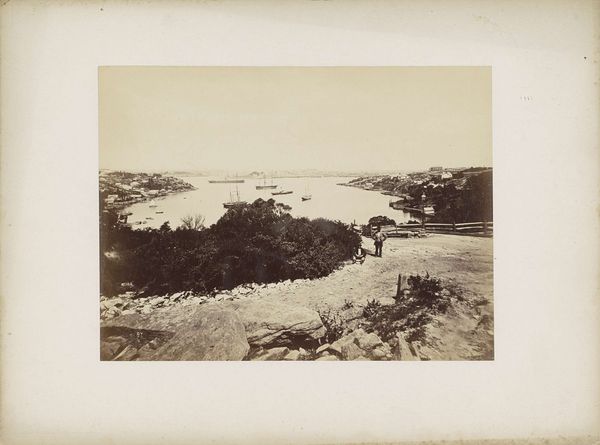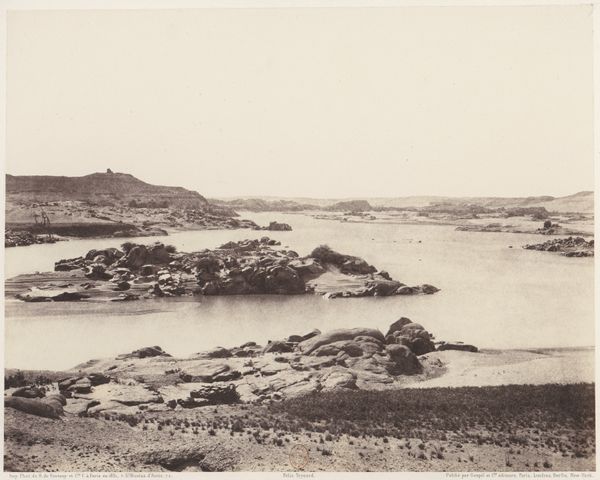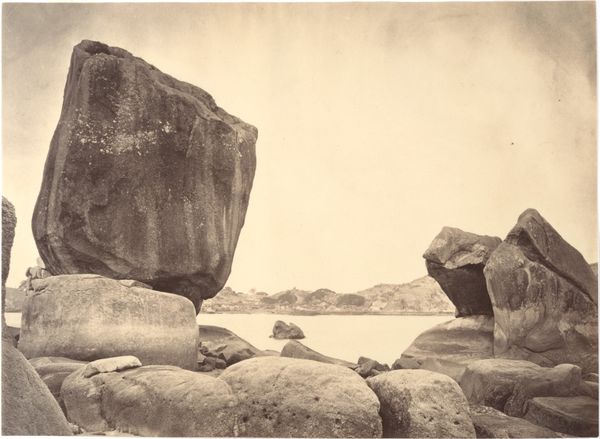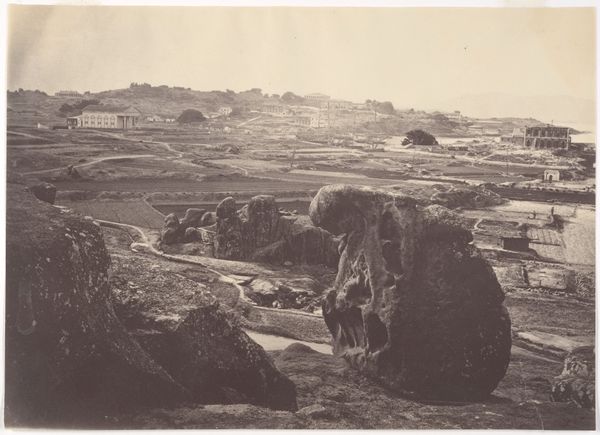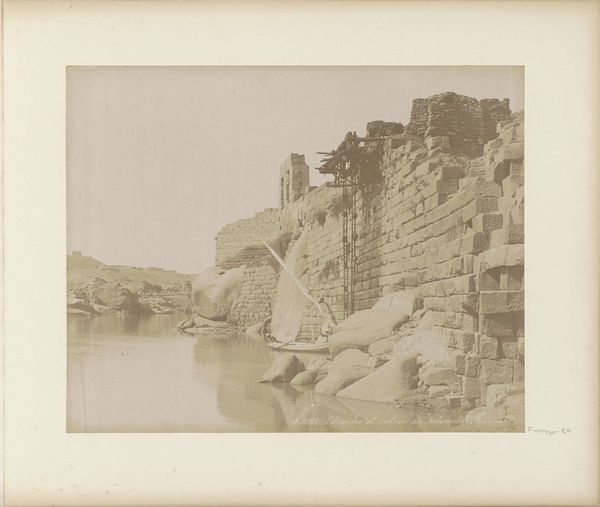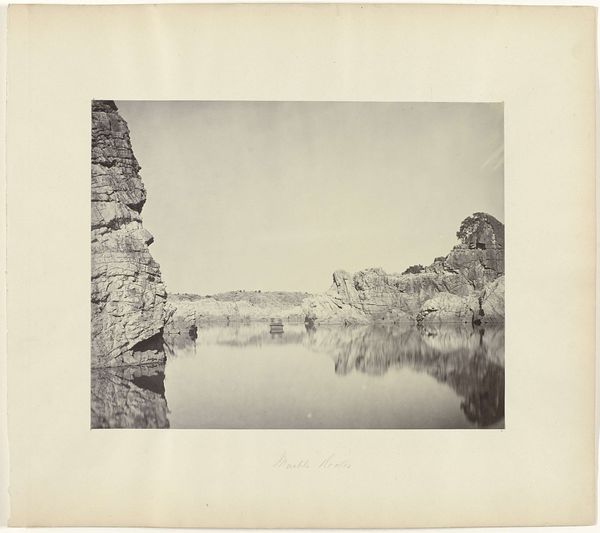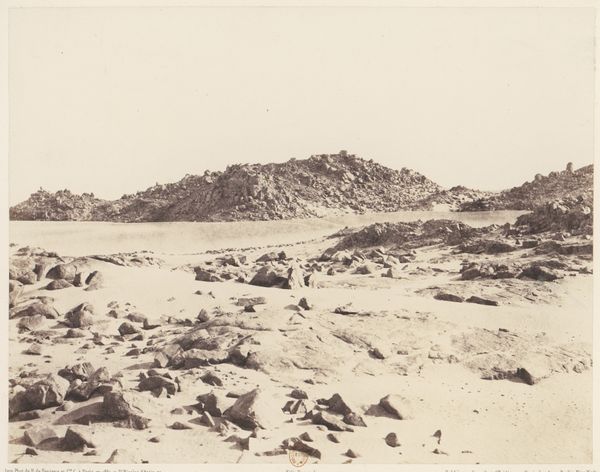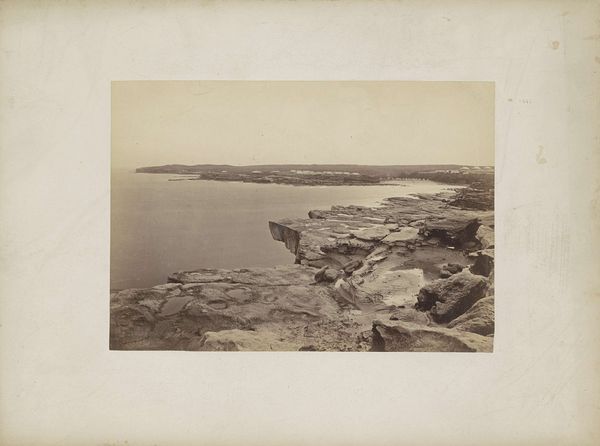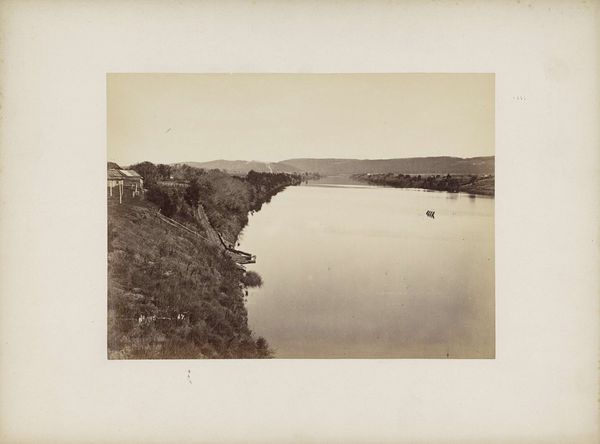
photography, gelatin-silver-print, albumen-print
#
landscape
#
photography
#
orientalism
#
gelatin-silver-print
#
albumen-print
Dimensions: height 220 mm, width 278 mm
Copyright: Rijks Museum: Open Domain
This photograph, "Stroomversnellingen in de Nijl," or "Rapids in the Nile", was created by Maison Bonfils using the wet collodion process, a technique that dominated photography in the mid-19th century. Think about the labor involved: a portable darkroom would have been essential to prepare and develop the glass plate on site, before the chemicals dried. The resulting print has a distinctive tonal range and clarity, capturing the textures of the rocks and the movement of water. Maison Bonfils operated a commercial studio, producing countless images of the Middle East for European consumption. This image speaks to the era's fascination with faraway places, transformed into commodities for a growing tourist market. Consider the photographer's role: less an artist, more a skilled technician, responding to consumer demands for exotic scenes. By considering the material processes, we get a glimpse into the social and economic forces that shaped this seemingly straightforward landscape image, and the distinctions between art, craft, and industry begin to blur.
Comments
No comments
Be the first to comment and join the conversation on the ultimate creative platform.
